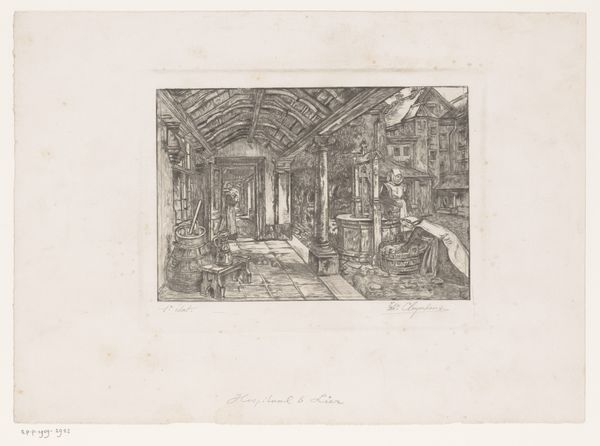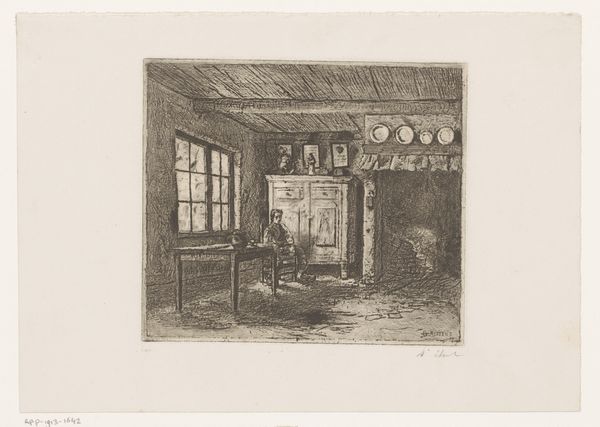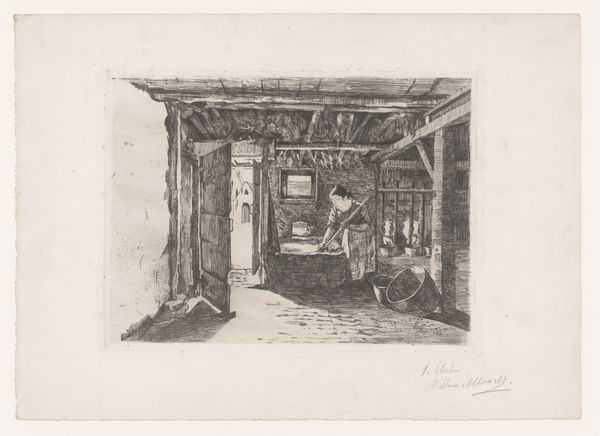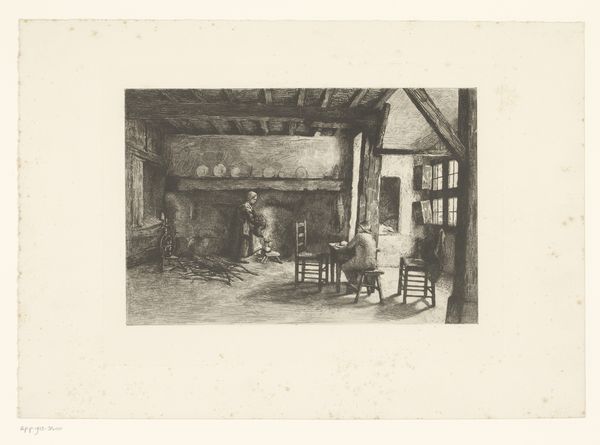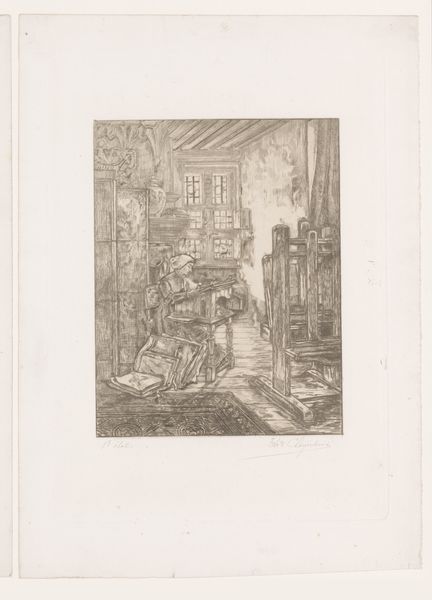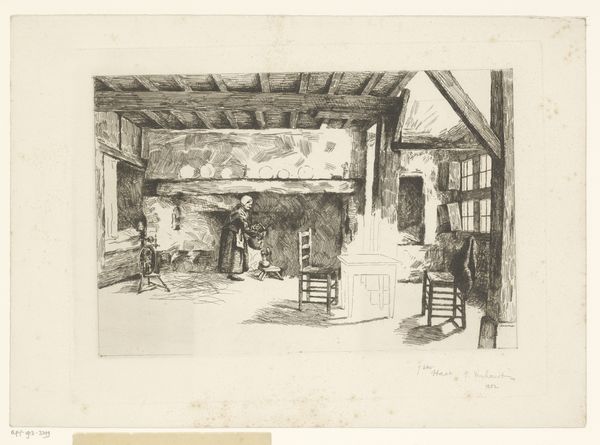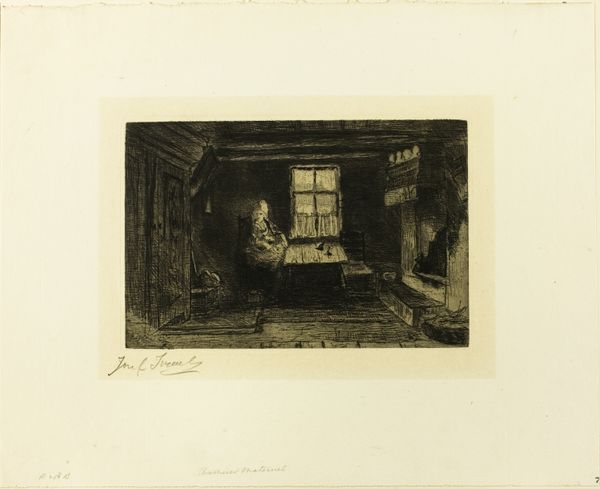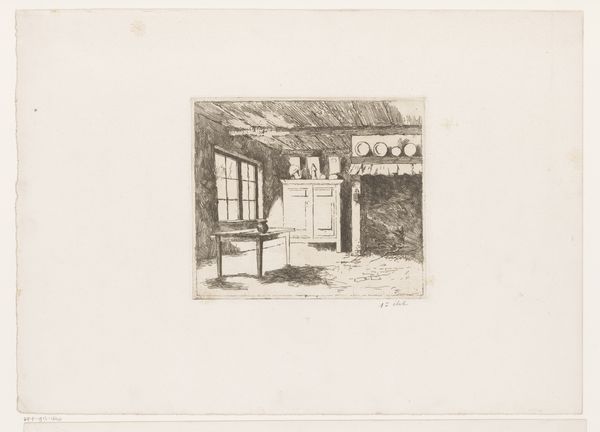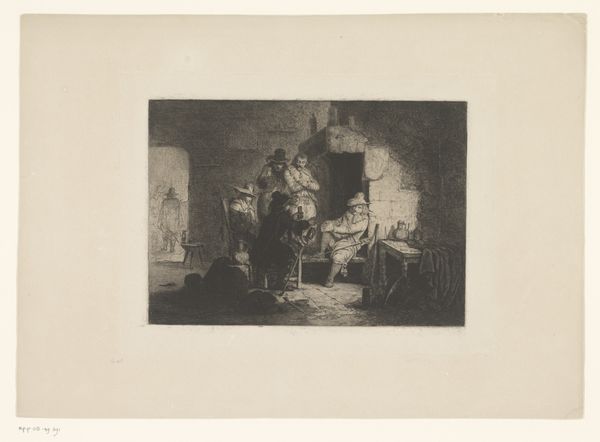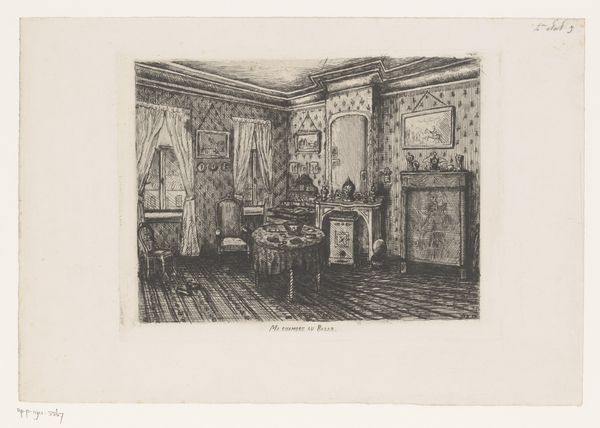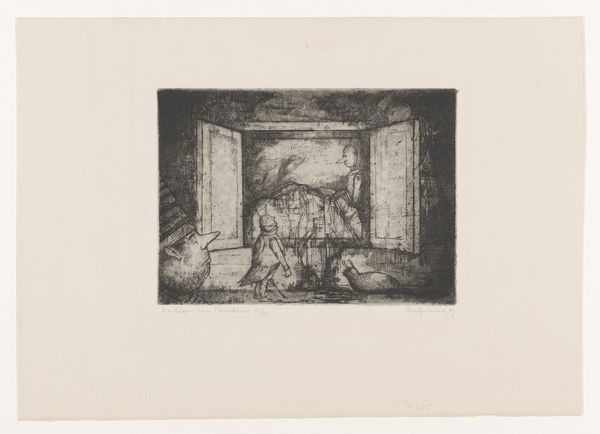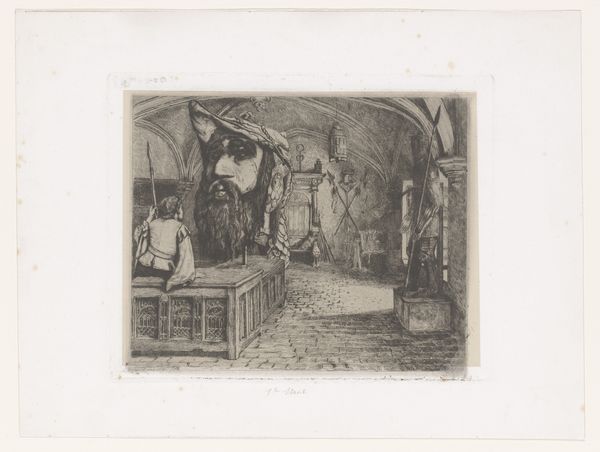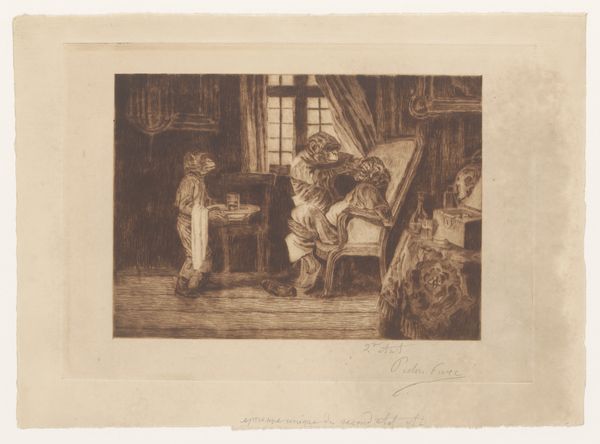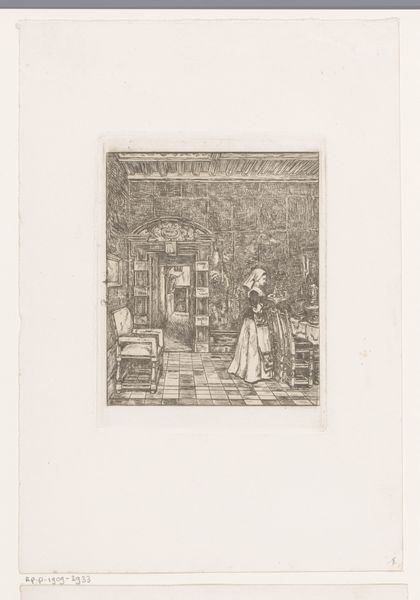
Kloostergang van het hospitaal te Lier met zusters bij een put 1851 - 1909
0:00
0:00
print, etching, architecture
# print
#
etching
#
landscape
#
genre-painting
#
architecture
Dimensions: height 180 mm, width 236 mm
Copyright: Rijks Museum: Open Domain
Curator: This etching is entitled "Kloostergang van het hospitaal te Lier met zusters bij een put," placing us in the cloistered courtyard of a hospital in Lier, Belgium, sometime between 1851 and 1909, the period in which Théodore Joseph Cleynhens was producing his works. My initial response is a deep sense of quietude and contemplation; the monochrome palette reinforces the hushed atmosphere of labour. Editor: Indeed. You immediately feel the weight of labor through Cleynhens’ medium: print. He has translated daily activity of nuns near this hospital, showing the materiality of life and its social texture. Curator: Yes, and that labour is undeniably gendered and very specific to religious women, to nuns living in this highly prescribed architectural space. It offers a glimpse into their lives and the important work they would have carried out. Editor: I see it as an illustration of social structures, showing the materials from their labour. Look at the water from the well, the stone making up the well itself, or the textile in the wash basin: we’re meant to observe their process, one that repeats constantly and is essential for sustaining communal life. Curator: Absolutely. The etching style, with its fine lines and delicate shading, adds to the sense of austerity and humble dedication, something reinforced by the figures and architecture. There is beauty and humanity there in this work, but so much implied structure. What kind of politics are at play? Editor: Good question. We are seeing social hierarchy at work, with humble actions represented as critical processes, and not so hidden behind gendered labour: they must work for the convent's sustainability and the well-being of its patients. There's an important link being made here between work and community that should not be missed! Curator: Reflecting on this etching, I’m struck by how it connects art, religion, labour and societal position: the constraints and confines, even. This is far more than just a picturesque scene; it is an important historical marker. Editor: And for me, its power resides in illustrating daily actions by portraying both structure and materials, suggesting an ecosystem between these nuns, architecture and manual labor. It leaves a tangible effect long after they’ve completed their work.
Comments
No comments
Be the first to comment and join the conversation on the ultimate creative platform.
